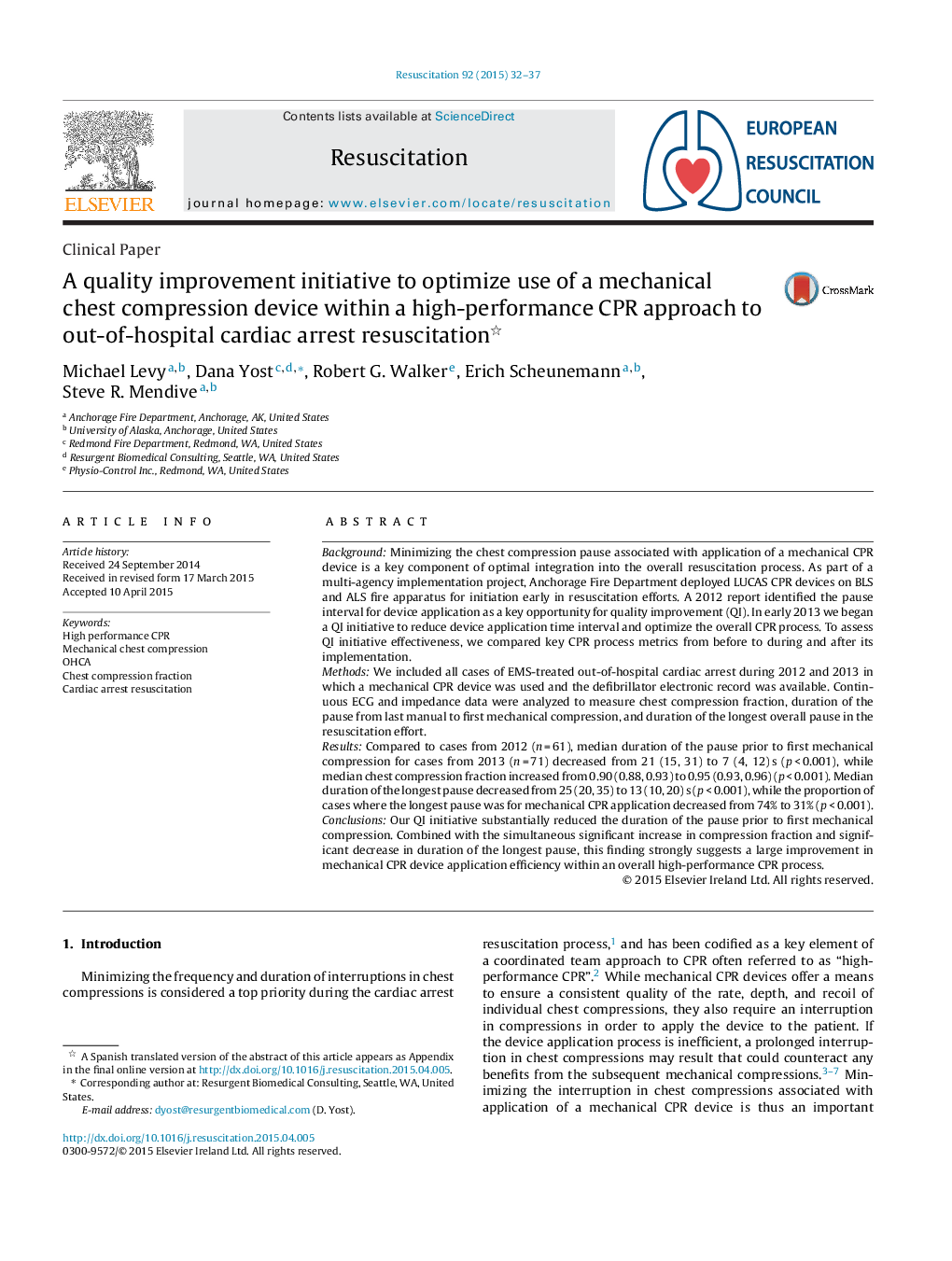| کد مقاله | کد نشریه | سال انتشار | مقاله انگلیسی | نسخه تمام متن |
|---|---|---|---|---|
| 5997798 | 1578992 | 2015 | 6 صفحه PDF | دانلود رایگان |

BackgroundMinimizing the chest compression pause associated with application of a mechanical CPR device is a key component of optimal integration into the overall resuscitation process. As part of a multi-agency implementation project, Anchorage Fire Department deployed LUCAS CPR devices on BLS and ALS fire apparatus for initiation early in resuscitation efforts. A 2012 report identified the pause interval for device application as a key opportunity for quality improvement (QI). In early 2013 we began a QI initiative to reduce device application time interval and optimize the overall CPR process. To assess QI initiative effectiveness, we compared key CPR process metrics from before to during and after its implementation.MethodsWe included all cases of EMS-treated out-of-hospital cardiac arrest during 2012 and 2013 in which a mechanical CPR device was used and the defibrillator electronic record was available. Continuous ECG and impedance data were analyzed to measure chest compression fraction, duration of the pause from last manual to first mechanical compression, and duration of the longest overall pause in the resuscitation effort.ResultsCompared to cases from 2012 (n = 61), median duration of the pause prior to first mechanical compression for cases from 2013 (n = 71) decreased from 21 (15, 31) to 7 (4, 12) s (p < 0.001), while median chest compression fraction increased from 0.90 (0.88, 0.93) to 0.95 (0.93, 0.96) (p < 0.001). Median duration of the longest pause decreased from 25 (20, 35) to 13 (10, 20) s (p < 0.001), while the proportion of cases where the longest pause was for mechanical CPR application decreased from 74% to 31% (p < 0.001).ConclusionsOur QI initiative substantially reduced the duration of the pause prior to first mechanical compression. Combined with the simultaneous significant increase in compression fraction and significant decrease in duration of the longest pause, this finding strongly suggests a large improvement in mechanical CPR device application efficiency within an overall high-performance CPR process.
Journal: Resuscitation - Volume 92, July 2015, Pages 32-37